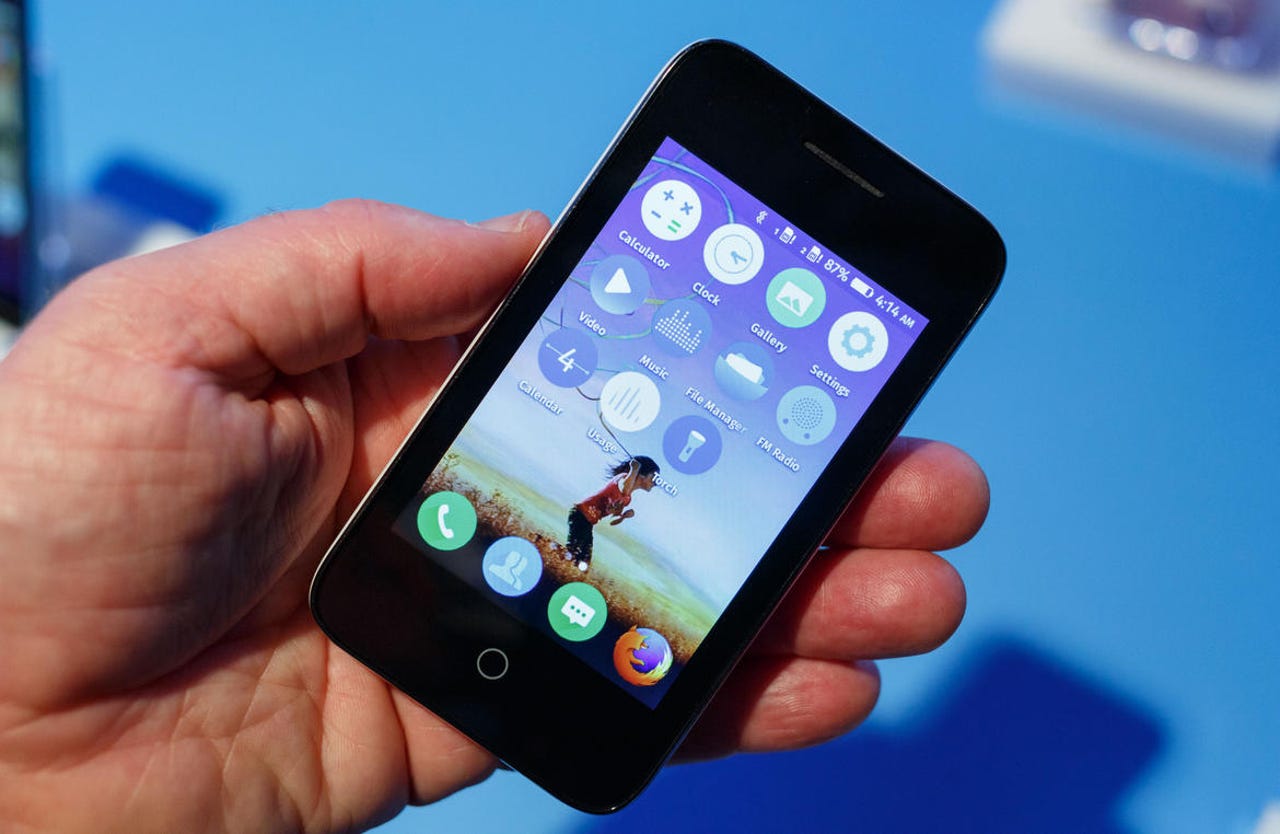As Firefox OS for $40 hits Africa, Mozilla steps up focus on developed markets

At the MWC trade show in Barcelona, Mozilla announced that new ultra-budget Firefox OS smartphones are destined for 13 markets in Africa and the Middle East. French carrier Orange will begin selling Klif, a Firefox OS 3G phone that's bundled with a data package from $40 (€35), on the continent in the second quarter of this year. Orange is aiming for consumers in these markets who've previously baulked at the data costs associated with smartphones.
As would be expected for that price, the Klif is a basic smartphone. Made by Alcatel Onetouch, it has dual SIM slots, offers 3G connectivity up to 21Mbps, and runs on a dual-core 1GHz processor. It also has a 3.5-inch HVGA display, 512MB of storage, 256MB of RAM, a microSD slot up to 32GB, a two-megapixel camera, and a 1300mAh capacity battery.
Orange said it will offer a typical data bundle of up to 500MB per month for six months with the option to top-up at the end of the period. Data packages will vary by market though they will include voice and text.
The 13 markets include Egypt, Senegal, Tunisia, Cameroon, Botswana, Madagascar, Mali, The Ivory Coast, Jordan, Niger, Kenya, Mauritius, and Vanuatu.
"Although the smartphone revolution is well under way across the African continent, there remains a proportion of the population that so far has been underserved, not just because of the cost of handsets, but because of concerns about data costs," Yves Maitre, Orange's executive vice president of connected objects and partnerships, said.
"By scooping up all the costs into one, incredibly priced digital offer, we hope that critical access to the mobile internet and all the opportunities that that opens up, will be within reach of many more people."
Higher end ambitions for Firefox OS
While the Klif is all about convincing feature phones owners to switch to smartphones for the first time, Mozilla has also lined up new partners to tackle the higher end in developed markets, including a new partnership with Verizon Wireless that sets the stage for a US Firefox OS launch.
Mozilla is teaming up with Japanese carrier KDDI, LG U+, Spanish operator Telefónica, and Verizon Wireless to develop a series of devices that should arrive in 2016.
The partnerships announced on Sunday follow last year's release of the mid-range Fx0 from KDDI, which could signal the type of devices that could join the Firefox OS fold.
The Fx0 is an LG-made LTE Firefox OS device that has notably higher specs than its peers and a price tag to match. The Fx0 offers a 4.7 inch display, eight-megapixel camera, 16GB of internal memory, and a 1.2GHz Snapdragon 400 processor. Besides that, its transparent body shows off the device's internal bits and makes for an eye-catching design.
The new phones destined to come from the partnerships will borrow from earlier phone designs such as flip, slider, and candybar form factors, and will focus on blending basic phone functionality with smartphone features such as apps, content, navigation, music players, camera, video, LTE, VoLTE, email, and web browsing.
How will Firefox OS fare?
It's difficult to measure the success Firefox OS has had in capturing consumers in South America, Africa, India, and parts of Europe so far, as Mozilla has not released sales figures and Firefox OS is not considered big enough to figure on analysts lists of most popular operating systems.
But Firefox OS has arrived amid a dramatic shift in smartphone ownership in markets like India, which has benefited from Android adoption through local vendors such as Micromax. At the same time, Google is forging ahead with its rollout of Android One in India, Bangladesh, Nepal, Sri Lanka, Indonesia, and most recently the Philippines. The one to watch across emerging markets is China's Xiaomi, which is proving to be a force to be reckoned with even outside of its home territory.
The shift to higher-end smartphones and developed markets marks a new phase in Mozilla's efforts to spread Firefox OS after traditionally focusing on emerging markets.
If enough consumers in wealthier markets take the leap to Firefox OS, perhaps it could encourage more developers to support Mozilla's ambition to break Google and Apple's stronghold on mobile apps through their respective stores. Mozilla's pitch for would-be Firefox OS developers is that they can build apps once for the web and have those apps available across all desktop, mobile, and tablet platforms.
However, Mozilla must still carve out a niche against the powerful duopoly of iOS and Android, which account for almost 96 percent of all smartphones sold in the last quarter of last year, according to Gartner.
More on Firefox OS
